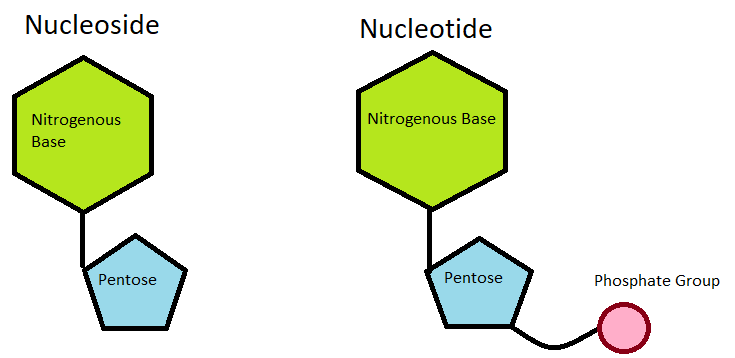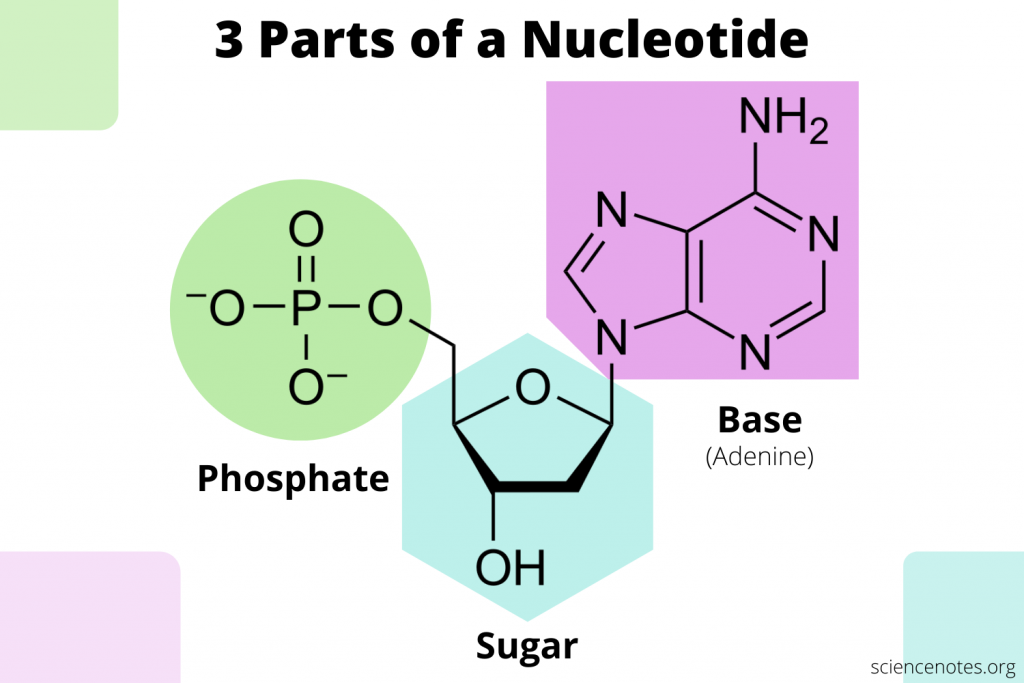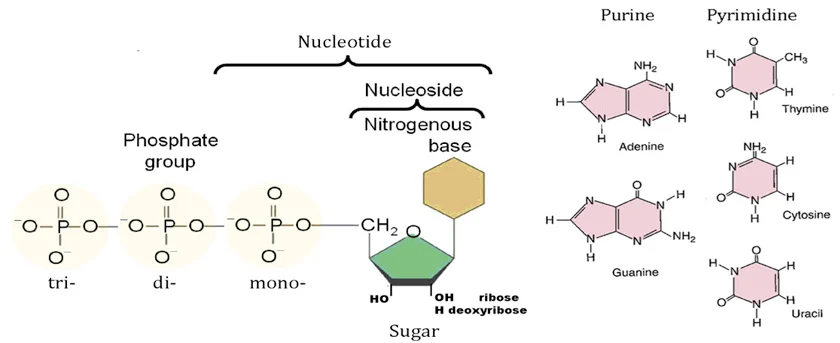Nucleotides and Nucleosides are an important group of biomolecules that play an important role in numerous biological functions in humans and form a major portion of nucleic acids- DNA and RNA. They actively store and transfer genetic information, and also play a major role in storing energy. The unique structures and interactions of these molecules govern the process of replication of genes and eventually protein synthesis.
This article will help you understand the main concepts and key differences between nucleotides and nucleosides.

Index
What is a Nucleotide
Nucleotides are essentially organic biomolecules that are made up of nucleoside and a phosphate group. Many nucleotides join together to form the nucleic acid polymers, deoxyribonucleic acid, and ribonucleic acid, both of which form the main genetic material in living organisms.
There are four nucleotides, or bases, in DNA: Adenine (A), Cytosine (C), Guanine (G), and Thymine (T).

What is a Nucleoside
Nucleosides are essentially organic biomolecules that are made up of a nucleobase (N-base) and a five-carbon sugar molecule. A beta-glycosidic bond joins the 3′ position of the 5-Carbon sugar to the N-base. The four nucleosides namely, Adenosine, Cytidine, Uridine, and Guanosine, are formed from adenine, cytosine, uracil, and guanine, respectively.

Difference Between Nucleosides and Nucleotides
Now that we have understood what exactly Nucleotides and Nucleosides are, let’s look at this table which highlights all the key differences between the two:
| Nucleotides | Nucleosides |
| Nucleotides consist of a phosphate group, a sugar molecule, and a nitrogenous base. | Nucleosides consist of a sugar molecule and a nitrogen base only. |
| The nucleotide is the monomer of the polymeric RNA and DNA. | The nucleoside is the building block of nucleotides. |
| Changes in any N-bases in the nucleotide leads to cancer. | Nucleosides are used in the synthesis of antiviral and anti-cancer drugs. |
| Examples include adenine (A), cytosine (C), guanine (G), and thymine (T). | Examples include adenosine, cytidine, uridine, and guanosine. |
FAQs
Nucleosides form the subunit of nucleic acids such as DNA and RNA and are hence found in both RNA and DNA. Nucleosides give rise to nucleotides which are the building blocks of DNA and RNA.
Nucleosides derive their names from the constituent nitrogen bases and sugar molecules they are built of. The four major ribose nucleosides are adenosine, guanosine, cytidine, and uridine; the four major 2-deoxyribose nucleosides are 2-deoxyadenosine, 2-deoxyguanosine, 2-deoxycytidine, and 2-deoxythymine.
Similar Articles
